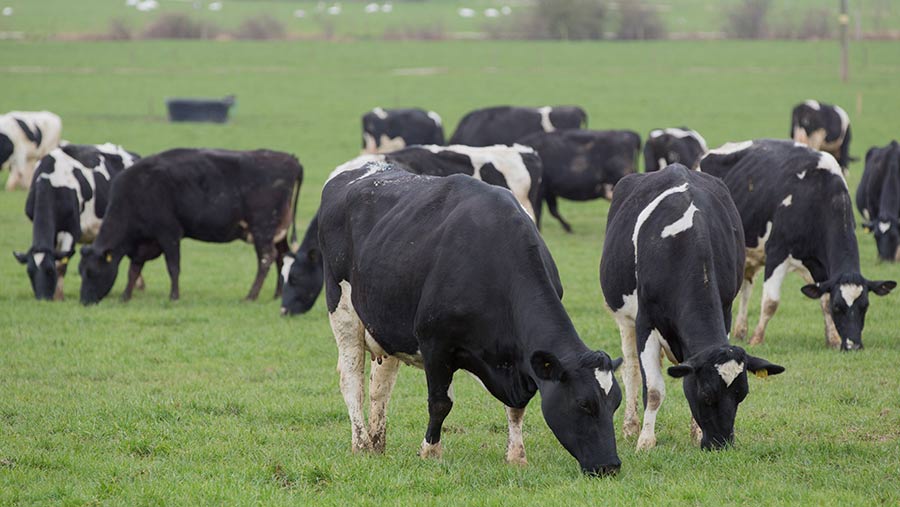Hundreds of millions wiped off value of UK dairy herd
 © Tim Scrivener
© Tim Scrivener Hundreds of millions of pounds have been wiped off the value of Britain’s dairy herd during the milk market crash.
Cow and heifer prices have plunged since the milk price high of early 2014 and higher numbers have hit the market this spring.
Auctioneers say demand remains for quality cattle and they are yet to see a flood of sales but TB restrictions are holding back many dispersals.
Average prices have fallen sharply – a typical Holstein or Friesian sold for £911 in April, 22% less than a year earlier and 34% below 2014 values, according to AHDB Dairy statistics.
See also: Dairy: should I stay or should I go?
Holstein or Friesian heifers have fallen further: they averaged £1,070 a head, down 23% on 2015 and 38% on 2014.
Based on these average British prices, the UK breeding herd of 1.918 million cows in December would now be worth £1.747bn. That is almost £900m less than two years before.
The number sold through markets has also picked up dramatically. Just less than 2,300 Holstein or Friesians were sold in April – an 89% rise on the year. Heifer numbers were up 7.7% at 1,443.
Auctioneers expect numbers to rise in the coming months at regular markets and dispersal sales.
Andrew Clements, from Greenslade Taylor Hunt at Sedgmoor, Somerset, said he had not seen a big rise so far.
Demand for quality
Sales had included small farms, struggling to keep costs down on lower numbers or losing contracts, as well as larger ones, either with poor milk deals or high labour costs, he said.
“In the short term we have a few small dispersals planned with a few more pencilled in, but the West Country is still short of dispersal sales and the demand for quality is still there,” Mr Clements said.
“With no signs of the milk price increasing and the continuation of an oversupply of milk being produced, we think it’s inevitable that more dispersals will take place for those on [lower-price] contracts.”
Auctioneer Gwilym Richards, who operates from Monmouthshire and Gloucestershire, has six herd sales booked already for the rest of 2016 – more than at the same time last year.
“If availability of secondary finance (leasing/hire-purchase for cows) became more restricted, more herds would be sold,” he said. “And, as herds become clear of TB, more would sell up.”
Dairy farmer numbers continue to creep down. At the start of May there were 9,579 producers in England and Wales, 277 fewer on the year.
No exodus
But the exodus of thousands, which was warned of last year, has not happened.
Farmers considering a whole-herd or partial sale need to think carefully about what suits their business best, say advisers.
A full dispersal will be best for some, with others selling off over four or five months, and some through private sale, said Kite Consulting’s Tanya Colman. A sale will carry commission costs and a gradual sell-off approach will mean overheads continue.
Farmers should critique what animals they send and make the most of returns, Ms Colman said.
Paperwork such as pedigree classifications, milk recording and pregnancy information should be up to date and any guarantees, such as cell count, should be met.
Producers should also make sure animals are in good condition, not necessarily cutting back on expensive feed or switching diets prior to the sale.
